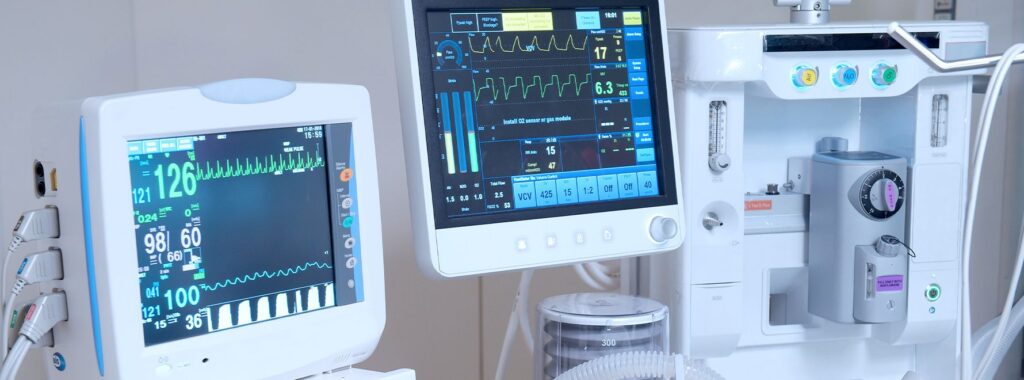The integration of artificial intelligence into medical devices has unlocked unprecedented capabilities. AI-driven systems now help detect anomalies in medical imaging, automate insulin dosing in pumps, and optimize surgical robots for precise interventions. But with these advancements come significant risks, especially when malicious actors target the very algorithms that make these devices intelligent.
One of the most concerning attack vectors is adversarial machine learning, where attackers subtly manipulate input data to deceive the AI model. For instance, imagine an AI-powered cardiac monitoring device trained to detect arrhythmias. An adversary could introduce imperceptible changes to the ECG signal, causing the device to overlook critical abnormalities or, worse, issue incorrect treatment recommendations. Such attacks, while complex, are not hypothetical—researchers have demonstrated their feasibility in controlled environments.
Even more alarming is the potential for data poisoning during the AI training process. If bad actors gain access to the datasets used to train medical AI, they can embed vulnerabilities that remain undetected until the device is in use. For example, tampering with glucose monitoring data could result in insulin pumps making harmful dosage calculations. These risks highlight a pressing need to secure the AI development pipeline, from data collection and model training to deployment and continuous monitoring.
Regulatory Strategies: Playing Catch-Up in a Rapidly Changing World
Regulatory bodies around the world are working to keep pace with the technological complexities of medical devices. The FDA’s 2023 cybersecurity guidance represents a significant step forward, introducing requirements for manufacturers to provide a Software Bill of Materials (SBOM) as part of their premarket submissions. The SBOM acts as an inventory of all software components used in a device, enabling healthcare providers to identify and address vulnerabilities more proactively.
However, the mere existence of an SBOM doesn’t guarantee security. Its effectiveness depends on whether manufacturers regularly update it, whether providers actively review it, and whether third-party software vendors remain transparent about their own vulnerabilities. As seen in the Log4Shell vulnerability of 2021, even a single overlooked component can have cascading effects.
The EU Medical Device Regulation (MDR), which took full effect in 2021, pushes for a more lifecycle-oriented approach to security. Manufacturers must implement post-market surveillance systems to monitor device performance and report cybersecurity incidents in near-real-time. Yet, compliance isn’t uniform. Smaller manufacturers often struggle to meet these requirements due to limited resources, creating disparities in device security across global markets.
Case Studies: Learning from the Past to Secure the Future
Real-world incidents continue to underscore the urgency of these challenges.
In 2022, a vulnerability in the Medtronic MiniMed insulin pumps exposed over 4,000 devices to potential remote attacks. Researchers found that attackers could intercept and modify wireless communications between the pump and its remote controller, allowing them to alter insulin dosages. Although no known exploitations occurred, the discovery prompted Medtronic to issue firmware updates and recommend switching to newer models—a costly but necessary measure.
Even more chilling was the 2020 ransomware attack on Universal Health Services (UHS), one of the largest healthcare providers in the United States. While the attack didn’t directly target medical devices, it disrupted access to electronic health records and diagnostic systems, delaying treatments and forcing some facilities to divert patients. The incident demonstrated how interconnected systems amplify vulnerabilities: attackers might not directly hack a pacemaker but could compromise the network it relies on for updates or monitoring.
The St. Jude Medical recall of 2017 remains a defining moment in medical device cybersecurity. Ethical hackers discovered that the company’s cardiac devices were vulnerable to remote exploitation, prompting the FDA to issue its first-ever recall due to cybersecurity concerns. It was a watershed moment, shifting the industry’s mindset from reactive fixes to proactive security measures during the design phase.
Emerging Security Paradigms
Securing medical devices in this rapidly evolving landscape requires a shift toward zero-trust architectures. The zero-trust model operates on the assumption that every device, user, and network segment is potentially compromised, necessitating continuous authentication and verification. For hospitals, this means isolating medical devices on separate network segments, ensuring that a breach in one system doesn’t cascade across the infrastructure.
Over-the-air (OTA) updates are another promising development. Historically, updating medical devices required physical access or even surgery for implanted devices. OTA mechanisms enable manufacturers to patch vulnerabilities remotely, significantly reducing response times. However, the implementation of OTA updates must be foolproof, as any misstep—such as incomplete encryption or validation—could introduce new risks.
A Human-Centric Approach to Security
While technical solutions are critical, the human element remains equally important. Healthcare professionals are often the first line of defense, but they are also the most exploited vulnerability. Training programs must go beyond generic advice like “don’t click suspicious links” and instead simulate real-world scenarios healthcare workers might face. For example, a phishing attempt disguised as an urgent update for a diagnostic device is far more likely to succeed in a high-stress hospital environment.
Manufacturers also have a role to play in reducing human error. Simplified interfaces, clear documentation, and automated alerts can help users implement security measures without requiring technical expertise. Transparency is key—hospitals should know exactly what a device can and cannot do to mitigate risks effectively.
A Future Worth Protecting
Medical device security is more than a technical challenge; it’s a moral imperative. Patients entrust their lives to devices that monitor their hearts, regulate their insulin, and guide surgical tools. That trust extends to the systems safeguarding those devices, from the hospitals deploying them to the manufacturers designing them.
The road ahead is fraught with complexity. New technologies like AI, digital twins, and blockchain offer promising solutions but also introduce fresh vulnerabilities. Regulations are evolving, but gaps remain, particularly for smaller manufacturers and resource-strapped healthcare providers. However, by combining technical innovation with regulatory foresight and a commitment to education, the industry can build a future where medical devices are as secure as they are lifesaving.






